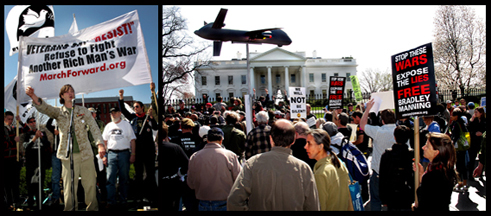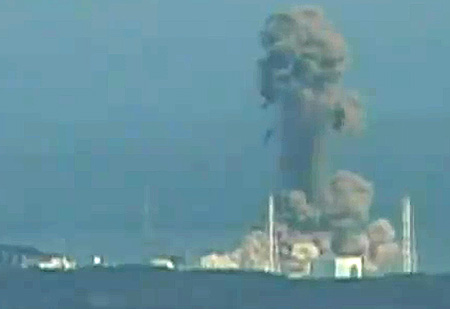The prime minister of Japan has said that his government is “not in a position where we can be optimistic” about the Fukushima Daiichi Nuclear Power Plant. Is there any logical conclusion to draw from that statement other than that a large chunk of Japan is going to be uninhabitable?
They’ve got four nuclear reactors right next to each other in various states of disaster and probably meltdown. Two more are damaged. The workers on site are exhausted, sick and dying. The ocean and air around the plant are highly radioactive. The surrounding farms are producing radioactive vegetables. The drinking water in Tokyo is radioactive. If the Fukushima reactors keep exploding and burning and blowing radiation into the reservoirs, how long before Tokyo becomes Jonestown with a population of 13,000,000?
Michio Kaku, the physicist and author, has suggested on CNN that the best option right now is entombment. There’s nothing to salvage, he said, so the Japanese government should get some shielded helicopters and dump sand, boric acid, dolomite and concrete on the reactors and bury them for eternity. This could be done in ten days, he said, if they just got the materials together, which they aren’t doing because the government is not facing the implications of its own declared lack of optimism.
I’m not a physicist, but entombment at Chernobyl was vastly more complicated than Kaku was able to discuss in the time limits of American television. The Chernobyl reactor had to be mostly neutralized before being permanently buried, which meant that 800,000 or so “liquidators” had to run into the plant, perform some menial task in the presence of boiling nuclear waste for a minute or two, and then run out. Most of them are now sick, dying or dead from radiation poisoning.
Perhaps burying Fukushima will be a more complicated process, because it has a lot more waste lying around and four out-of-control reactors while Chernobyl had just one. I don’t know. Either way, there is a moral problem that needs to be discussed.
Who will be the liquidators?
Whether Japan needs a few hundred volunteers to shovel boric acid on burning plutonium, or whether Japan needs 800,000 draftees, as in the Soviet Union, somebody’s got to do it.
 Japanese soldiers suit up to help fight the Fukushima meltdown
Japanese soldiers suit up to help fight the Fukushima meltdown








